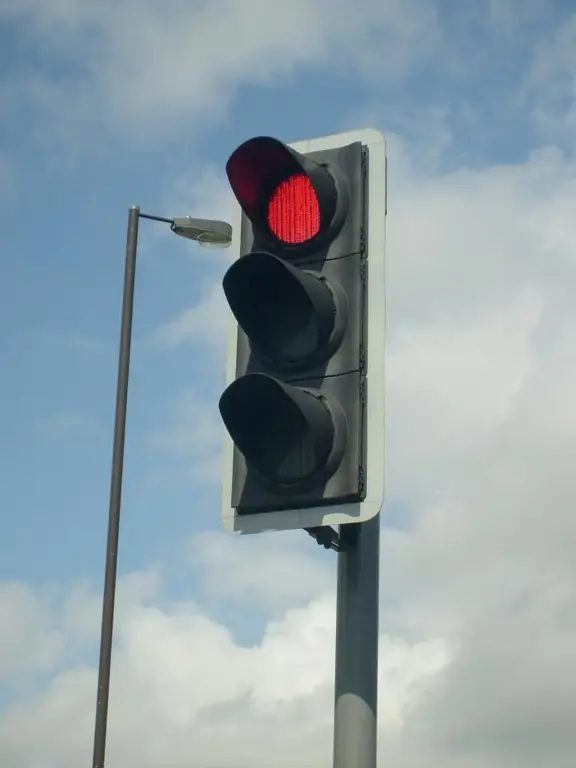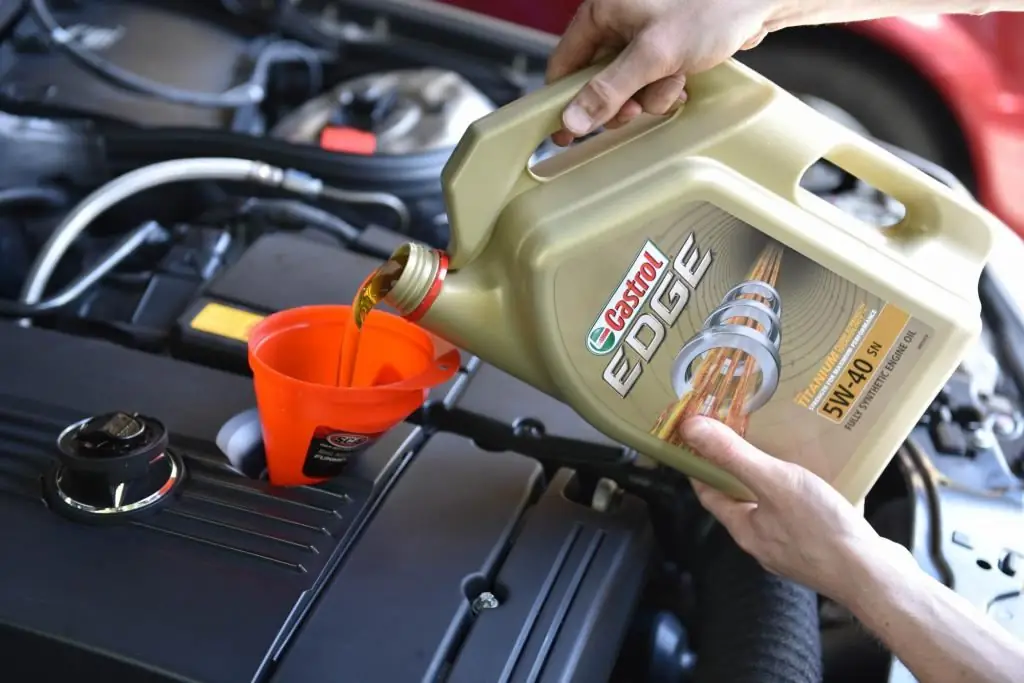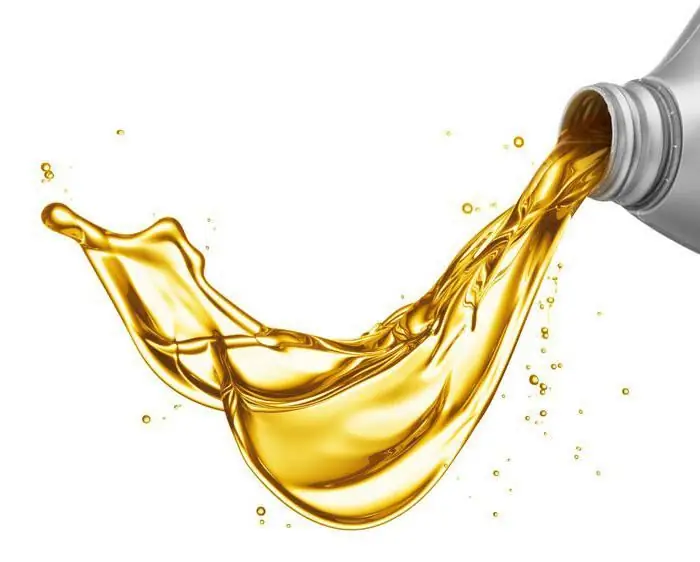2026 Author: Erin Ralphs | [email protected]. Last modified: 2025-01-22 21:14:14
Lubricating oils have been used by man for 3.5 thousand years. Even the simplest machines need them. Before the appearance of oil and products of its processing, vegetable and animal fats were used. For example, when operating steam engines, rapeseed oil was used. This material adheres well to metal surfaces and does not wash off with water or steam.
In 1859, petroleum products appeared, which served as the basis for the creation of mineral oils. With the advent of polymeric viscosity modifiers, the transition from summer and winter to all-season compositions has become possible.
Types of motor oils
The product is a composition of materials. It consists of two parts: a base oil and a set of additives. The latter provide a variety of product properties. Based on the way the base oil is produced, it is divided into three types.
1. Mineral derived from oil (mineral).
2. Synthetic, obtained as a result of complex petrochemical synthesis. The marking of synthetic motor oil is fully synthetic. The highest quality and most expensive.

3. Semi-synthetic, manufactured onmineral base with the addition of highly effective synthetic components (semi-synthetic). Reasonable compromise in price/quality ratio.
Synthetic oils have several advantages over mineral oils.
Destination
The main purpose of lubrication is the formation of a thin and at the same time strong film on the surface of rubbing parts to prevent direct contact of their microroughnesses. Thus wear is minimized.
Purpose of motor oils: universal, for gasoline and diesel engines. A separate group is for two-stroke power plants. This is evidenced by the corresponding marking of motor oils: the value "diesel", "2T" or "2 tact". Its absence indicates universal application.
Choice
How to choose engine oil? The label contains many indicators, but the consumer is interested in two of them:
- quality level (whether it fits a particular car);
- viscosity (whether suitable for a certain season and climate).
New, modern machines require a special approach.

Answers to two main questions are given by the marking of engine oil. Its decoding is in the generally accepted indexing system.
There are several of them. The three most commonly used are SAE, API and ACEA. Sometimes ILSAC is added to them.
SAE standard
Classification based on viscosity characteristics. They are the main ones in this system.
SAE (Association of Automotive Engineers of America)sets which viscosity range the engine oil belongs to.
Marking uses this indicator, measured in arbitrary units. The larger it is, the higher the viscosity.
The standard establishes three groups of oils: summer, winter and all-weather. The latter are the most common.
From the names of the different types, it becomes clear that this marking, based on the SAE standard, can only tell one thing: whether the oil is suitable for use in a particular season in certain climatic conditions or not. Only this.
The standard establishes three groups of oils. They vary in seasonality.
1. 0W, 5W, 10W, 15W, 20W, 25W - winter oils. There are six of them. Parameter with index W (winter) - "winter". The smaller it is, the more effective the "cold" use. The minimum value is 0.
2. 20, 30, 40, 50, 60 year old oils. There are five of them. The unsigned parameter W is "summer". Indicates the retention of viscosity with increasing temperature. The higher this parameter, the more efficient the use of oil in the heat. The maximum value is 60.
3. 5W-30, 5W-40, 10W-50, etc. - all season. Their number is 23.

For example, the marking of engine oil 5W30 means that it is an all-weather application. It is recommended for use in the air temperature range from -30 to +20 degrees.

So, what kind of information characterizing engine oil does the SAE marking giveconsumer?
This is information about the temperature characteristics of the medium, under which the following is provided:
1. Cranking the crankshaft with a regular electric starter during a cold start.
2. The mode of pumping oil through the engine lines. At cold start, it must provide a pressure that eliminates dry friction in the mates.
3. Reliable summer lubrication for long, hard-duty applications.
API classification
Developer - American Petroleum Institute. API allows you to choose the oil for the car, depending on the year of its manufacture. After all, the process of improving machines, which consists in the release of faster, lighter and more advanced engines, is continuous.
Classification focused on vehicles made in America.
The letter marking of engine oil has been adopted. This is the decryption. S (Service) - gasoline, C (Commercial) - diesel. Performance is indicated by the second letter of the marking, in order from A and further - as the quality improves. For example, the SJ class was introduced quite recently. At the same time, he pressed SH. The SJ classification is assigned to expensive and high-quality synthetic-based oils. They are designed for the most modern machines.
The cheaper SH are inferior to the SJ in some respects, they are ideal for cars made in 1994-1989 and earlier. The SF class is geared towards older slow and simple motors.
Multipurpose motor oil: double marking, for example: SF / CC, CD / SF, etc. SF/CC-"rather petrol", CD/SF- "rather diesel". An example is in the photo.

Due to the dynamic development of diesel engines, they are becoming more complex: turbocharged equipment, etc. Special solutions are required for such power plants. Therefore, leading manufacturers include diesel oils in their range. These compositions receive a special label "Diesel".
A separate group includes oils for gasoline power plants with an energy-saving function. They have an additional EU designation (Energy Conserving).
Classification of the Association of European Automobile Manufacturers (ACEA)
It is characterized by more stringent requirements for the quality of oils. This is due to the fact that in Europe the specific operating conditions of cars and slightly different engine designs.
ACEA classification characterizes engine oil performance at high temperatures.
ACEA distinguishes four classes marked A, B, C, E. Designed for gasoline, diesel engines, as well as power plants equipped with converters.
Classification into a separate group highlights energy-saving oils. They have some special features. When using them, fuel economy is achieved by reducing the thickness of the oil film at high operating temperatures. Some, mostly Japanese, engines are designed specifically for such brands. Energy-saving oils are used only when recommended by the vehicle manufacturer. Yes, BMW andMercedes-Benz advises not to use them at all on cars of these brands.
What does ACEA engine oil marking mean? Classes A and B are marked in the same way in terms of energy saving. What does it mean? Classes A1, A5, B1 and B5 are energy saving. The rest are standard oils. These are A2, A3, B2, B3 and B4. Energy saving oils are not used in older cars. They require stronger protection.
Double markings, like A3/B4, are used to designate universal oils (gasoline or diesel).
A significant part of American and some European automakers recommend compositions corresponding to ACEA A3/B4 for their cars, while Japanese concerns recommend ACEA A1/B2 or A5/B5.

ILSAC classification
The brainchild of two Associations of Automobile Manufacturers - Japan and America. It has three classes of oils that provide energy saving and are intended for passenger gasoline cars. Markings: GF-1, GF-2 and GF-3.
These oils are best suited for cars from the Land of the Rising Sun. For American cars, brands selected by ILSAC are equivalent to API.
Recommendations and standards of automakers
API and ACEA classifications set the performance of oils. Moreover, their values are the minimum allowable. Despite the fact that manufacturers of oils and additives coordinate their requirements with car manufacturers, they are not always satisfied with the latter. Tests according to standard methods cannot fully take into account the features of operationnew modern engines. Therefore, automakers reserve the right to formulate their own specifications that put forward special requirements.
By testing oils on their engines, they either select oils based on one of the generally accepted classifications, or develop their own standards, indicating the grades that are most suitable and allowed for use.
Specifications of automakers are mandatory indicated on the packaging next to the marking of the performance class. This requirement is strictly observed.
A unified engine oil marking has been adopted worldwide. Deciphering it gives an unambiguous answer to the question about the scope of the product.
Let's look at an example. So, the marking of engine oil is 5W40.

This is a synthetic composition for all-weather use at air temperatures from -30 to +35 degrees.
According to the API CJ-4 classification, the oil is used for vehicles manufactured after 2006 and equipped with high-speed diesel engines that meet 2007 emission standards. It is used when operating on fuel that contains no more than 0.05% sulfur. Effective for vehicles with particulate filters and exhaust gas recirculation. When running on high quality fuel containing no more than 0.0015% sulfur, provides increased mileage before replacement.
Thus, the 5W40 engine oil marking indicated on the package contains sufficient information to determinesuitability for specific vehicle models.
Recommended:
API SL CF: decryption. Classification of motor oils. Recommended engine oil

Today, almost any driver who has a we alth of experience behind him knows perfectly well what the decoding of the API SL CF testifies to. This applies directly to engine oils, and among them there are different options - for diesel and gasoline engines, including universal oils. Beginners can simply get confused in this combination of letters and sometimes numbers
SDA paragraph 6: what does the flashing green traffic light mean, how to navigate the traffic light correctly

From childhood, we are familiar with traffic lights, but in detail the features of their work are studied only by drivers. They know what a flashing green traffic light means and what pitfalls are hidden behind these artificial traffic controllers. In paragraph 6 of the SDA (except for paragraphs 6.10-6.12) talks about how to navigate by traffic lights, and what types of these devices exist
Engine-"millionaire" - what does it mean? What cars is it on?

At least once, every motorist has heard such a term as a “millionaire” engine. Pretty sonorous name, of course, has a sensible definition. What is it, and on what cars is it more common? These and other questions will be discussed in this article
Motor oils: oil properties, types, classification and characteristics

Beginner drivers face many questions when operating their first car. The main one is the choice of engine oil. It would seem that with today's product range on store shelves, there is nothing easier than choosing what the engine manufacturer recommends. But the number of questions about oils does not decrease
Why does engine oil turn black quickly? Selection of oil for the car. Terms of oil change in the car engine

Why does engine oil turn black quickly? This question worries many motorists. There are many answers to it. Let's consider them in our article in more detail. We will also pay special attention to the most common types of additives used to improve oil performance

